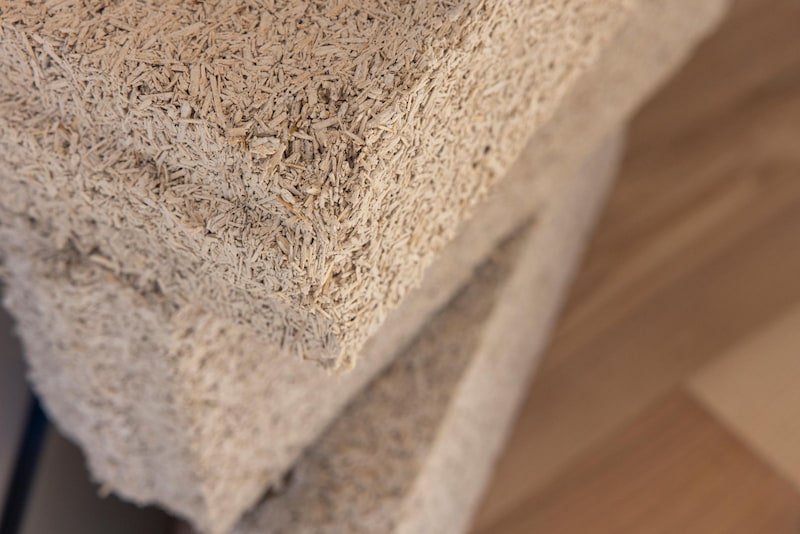
CO2 removals from biogenic building projects. Created locally - with a global impact
milton.earth trades in CO2 certificates to support building owners and companies in their sustainability strategy.
Our aim is to transform the construction industry in a sustainable way by actively promoting the use of biogenic building materials and thus transforming buildings into carbon reservoirs.
Our CO2 certificates comply with the internationally recognized "Global Construction C-Sink Standard", which was developed by the Ithaka Institute in accordance with the EU Carbon Removal Certification Framework (CRCF).
CO2 certificates support net zero strategies
Many companies are developing Net Zero strategies in order to actively contribute to overcoming the climate crisis. The implementation challenges are considerable, as not all of the negative consequences of corporate actions can be fully offset by process optimization or product adjustments alone. Without removing CO2 from the atmosphere, the net zero target will not be achievable for many companies. However, the development of many technical extraction technologies is still in its infancy. Therefore, natural removal by storing CO2 in long-lasting products or buildings is of great importance today. The Carbon Removal Certification Framework adopted by the European Parliament in 2024 takes this into account.
Overview of negative emission technologies
Carbon removal certificates (removals) have established themselves as a key instrument of carbon management. Carbon removals are a complementary measure. Avoiding emissions always comes first.
Do your best, offset the rest.
"By purchasing CO2 removal certificates, companies can make an important contribution to climate protection. They enable the development of innovative building materials and open up exciting business opportunities."
Briefly summarized:
-
The European Union is pursuing the ambitious goal of reducing its greenhouse gas emissions by at least 55% by 2030 compared to 1990 levels and achieving climate neutrality by 2050. In 2024, the crucial role of CO2 removal in achieving these targets was officially recognized by the EU. It was the first major economic area to introduce a Carbon Removal Certification Framework (CRCF), which creates a legal framework for offsetting unavoidable emissions through carbon sequestration.
-
CO2 can be sequestered in various ways, including storage in products, in agricultural sinks or in geological reservoirs. However, each of these methods poses specific challenges, particularly with regard to the long-term nature of CO2 sequestration. The CRCF places particular emphasis on the clear distinction between CO2 mitigation and CO2 removal. "Carbon removals" are strictly defined as the additional removal of CO2 from the atmosphere and not merely the omission of emissions. They are therefore also referred to as "negative emissions".
Through this clear framework, the EU is making a decisive contribution to achieving its climate targets and at the same time promoting greater awareness of sustainable carbon management practices.
-
The quality criteria set out in the regulation are intended to prevent greenwashing and make the measures to reduce greenhouse gases certifiable and tradable in the voluntary carbon market.
This market complements the mandatory EU Emissions Trading System ("EU ETS") and is becoming increasingly important for achieving global climate targets. Both companies and private individuals have the opportunity to contribute to climate protection by actively participating beyond legal requirements.
-
The construction industry plays a crucial role in tackling climate change. As buildings are currently responsible for 39% of global carbon emissions, the decarbonization of the sector is of central importance.
An increasingly sustainability-oriented construction industry must rethink "building" and increasingly rely on biogenic building materials. Wood, hemp, biochar concrete, straw, bamboo, grass or reeds used in buildings bind CO2 and form a natural, temporary CO2 sink. Buildings are thus becoming part of the solution in the fight against climate change.
-
The renowned Ithaka Institute has developed a new standard, the Global Construction C-Sink, to identify CO2 sinks. The building sink is calculated on a net basis: emissions from agriculture, processing, transportation and installation are deducted. The certification relates directly to the building itself (the building is the CO2 sink) and can be used for insetting (the building's own CO2 balance) or sold on to third parties. The new standard has been developed in accordance with the Carbon Removal Certification Framework Regulation ("CRCF Regulation").
emissions and CO2 removals
Temporary extraction using biogenic building materials is part of the solution and is already available today.






